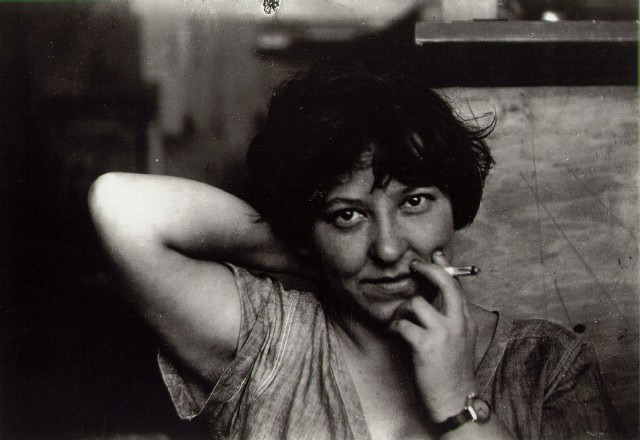
Varvara Stepanova (1894–1958) was among the leaders of the Constructivist movement. You may be more familiar with her husband and comrade Aleksander Rodchenko, but Varvara had an successful design career in her own right, and is best known for her textiles designs and theatrical costumes and posters.
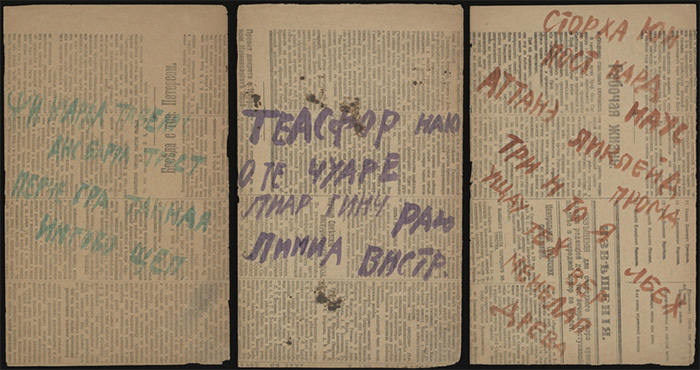
Gaust Chaba, considered the masterpiece of Stepanova’s [Visual Poetry] series
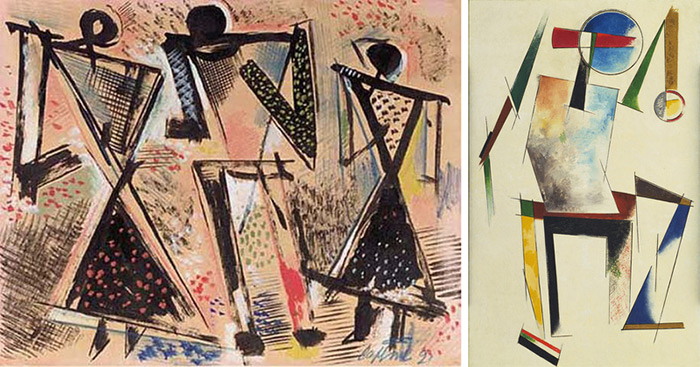
Some of Stepanova’s figures.
Around the same time (1919), Stepanova was also working on her [Figures] series of paintings, in which she created dynamic figures from lines, dots, planes, and circles.
1921 was a pivotal year for Stepanova, who by this time already had two state exhibitions under her belt. Aleksay Gan, Rodchenko, and Stepanova founded the First Working Group of Constructivists; upon these principles Stepanova would write papers and engage in debates at the Moscow Institute of Artistic Culture. Later that same year, the artist and her gang presented the 5×5=25 show, in which they claimed to have exhibited the death of art. Of this geometric, non-representational work, Stepanova wrote:
The ‘sanctity’ of a work as a single entity is destroyed. The museum which was the treasury of art is now transformed into an archive.
With a solid ideology in place, Stepanova sought opportunities to use her art for the masses, for cultural institutions outside the gallery.

Get 300+ Fonts for FREE
Enter your email to download our 100% free "Font Lover's Bundle". For commercial & personal use. No royalties. No fees. No attribution. 100% free to use anywhere.
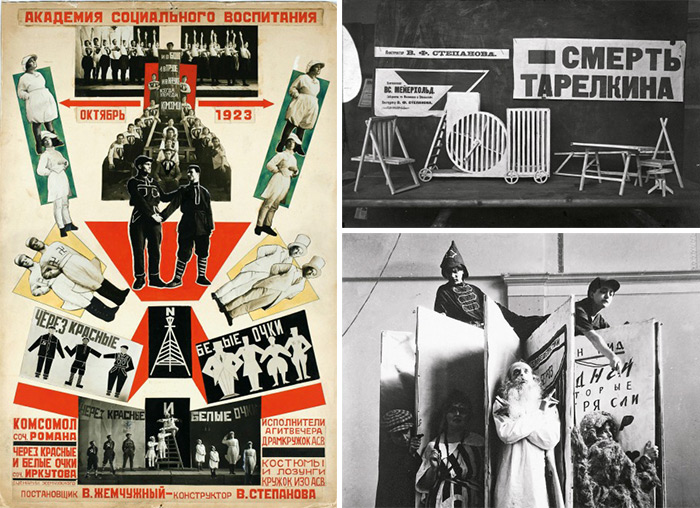
Design for the theater, clockwise from left: poster for Through Red and White Glasses, set pieces for The Death of Taralkin, and costume/set design for An Evening of the Book.
Among her works for theater, Stepanova is probably best known for her contributions to The Death of Taralkin (1922), for which she designed simple, geometric costumes and multi-purpose set pieces.
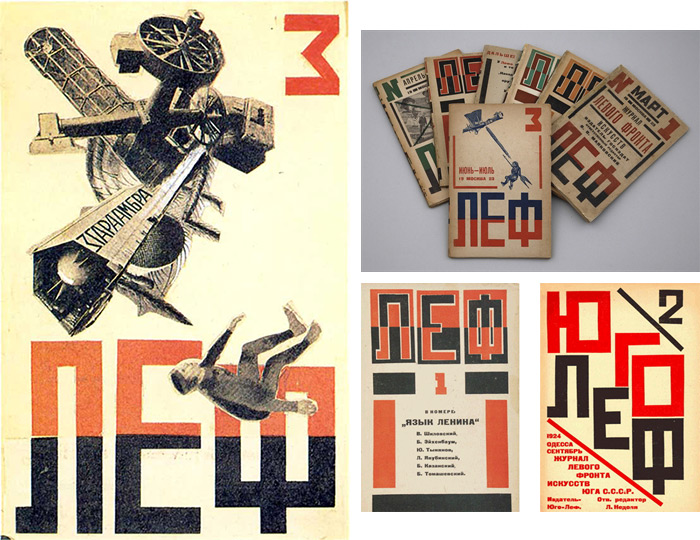
Covers for the LEF journal.
LEF, a literary-art journal established in 1923, provided Stepanova and Rodchenko with a playground for the boldly graphic style that was the hallmark of the Constructivists.
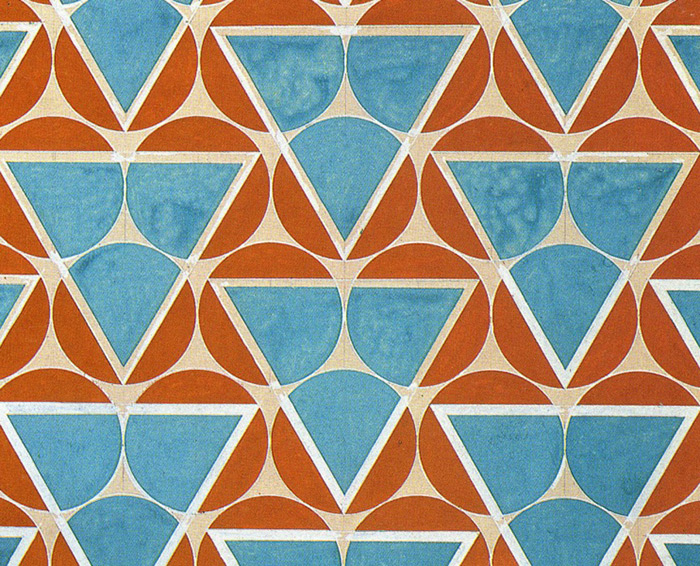
Circle Points—Teal and Orange, 1923
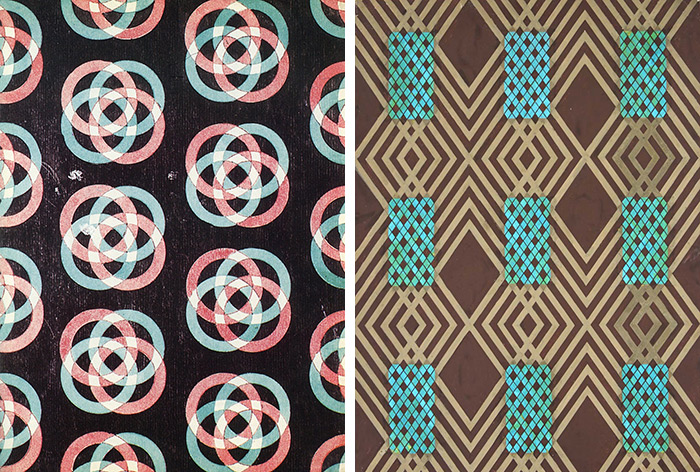
1924 textile patterns
Stepanova’s dream project was to design industrially-produced products, a dream she saw realized when some of her textile designs were mass-produced—not even Rodchenko can claim this bragging right. Stepanova, along with fellow lady-comrade Lyubov Popova, became a textile designer at the Tsindel (First State Textile Factory) and taught the same trade at the Vkhutemas (Higher Technical Artistic Studios).

Sports outfit
Possibly Stepanova’s best-known work is her sports costume: geometric, androgynous, and concerned with the movement of the body.
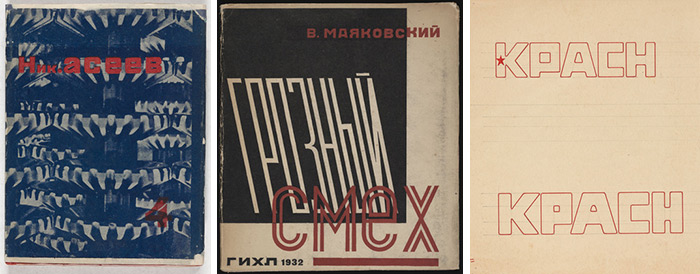
L to R: Collected poems, vol. 4 written by Nikolai Aseev, Groznyi smekh. Okna ROSTA written by Vladimir Mayakovsky, logo for the album The Red Army
In the late ’20s through the ’50s, Stepanova continued to work in typography and book design, often for government-commissioned projects. Publications include SSSR na stroyke (‘USSR in construction’) and Sovetskaya zhenshchina (‘Soviet woman’).
Varvara Stepanova passed away in 1958 as an accomplished leader in the Russian avant-garde scene.
For further reading on the women of the Constructivist movement and the generation that followed them, check out this article on the TATE website.
Sources:
